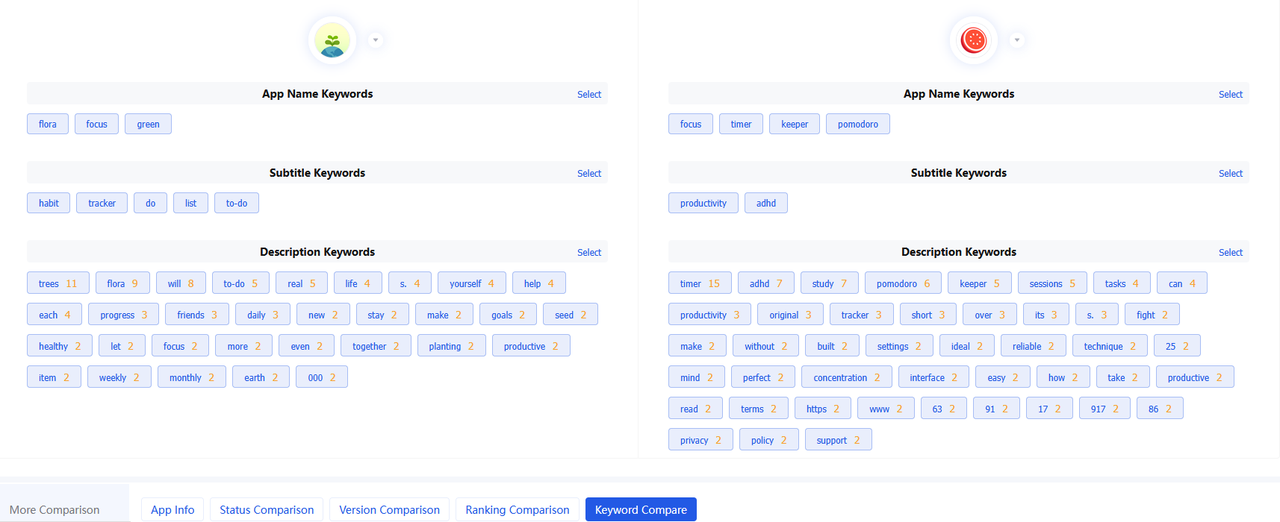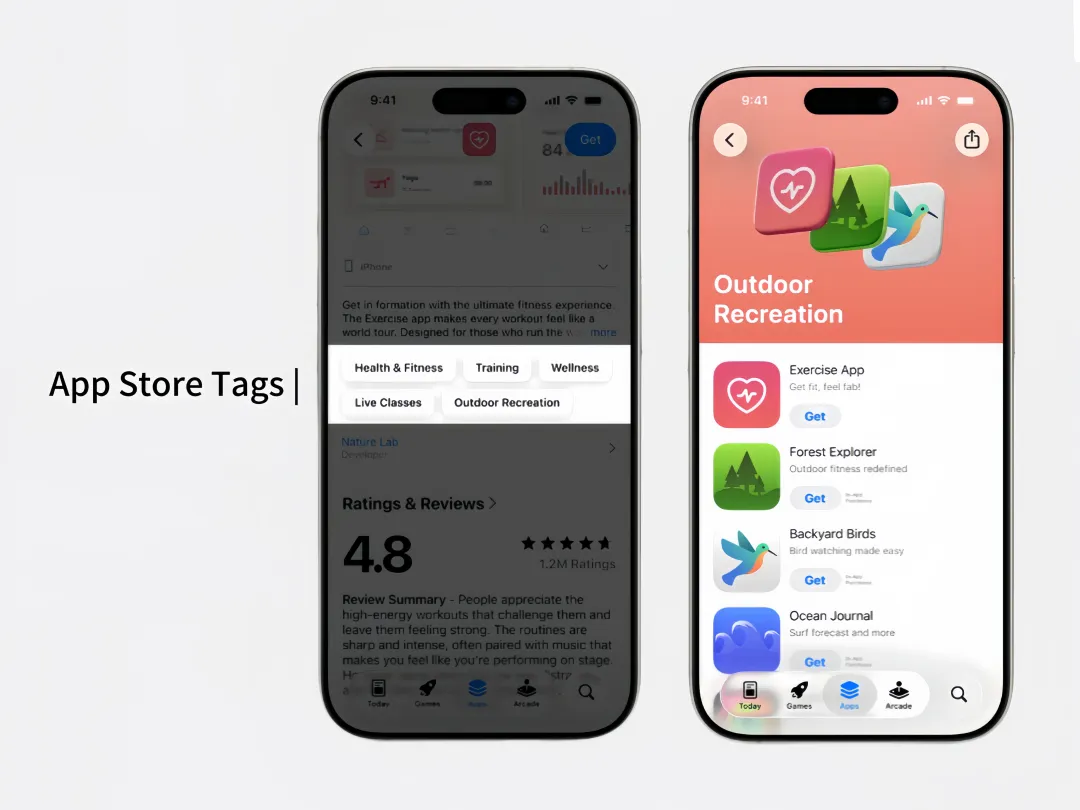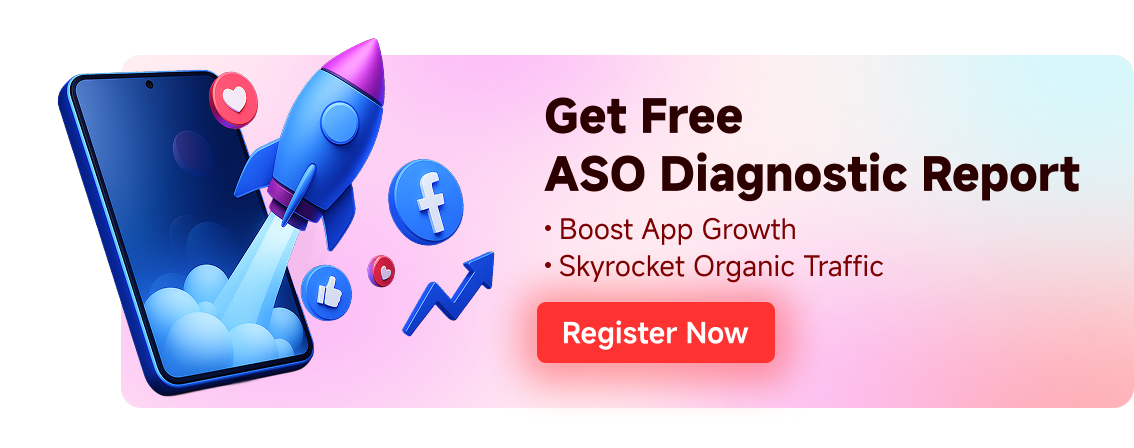
Loading...
Free consultation with ASO specialists
Doing ASO for the first time or have no idea how to carry out targeted optimization of your app?
We offer one-on-one customized services provided by app marketing specialists
Advanced Guide to ASO Fine Operations: Precision Data Diagnosis and Keyword Ranking Optimization Practice
2025-09-10
aso
ASO Techniques
App Store Optimization
Keyword Optimization
App Store
Application Growth
Keyword Research
In today's mobile market, where millions of apps compete for attention, simply releasing an app to the store is far from enough. How to stand out in fierce competition and gain continuous organic traffic is a core challenge faced by every developer and marketer. Traditional App Store Optimization (ASO) methodologies are rapidly becoming outdated, replaced by a more scientific and in-depth strategy—fine-tuning ASO operations. This is not just about keyword stuffing; it's a comprehensive battle centered around data insights, user experience, and algorithm trends.
This article will delve into the core elements of ASO fine-tuning operations, starting from understanding the underlying logic of app store ranking algorithms, implementing data-driven keyword strategies, and embracing the latest ASO trends in 2025, providing you with a practical guide for keyword ranking optimization that can be implemented.
Understanding the App Store Ranking Algorithm: The Cornerstone of ASO
To rank higher in the App Store, you must first understand how its ranking algorithm works. Although Apple has never fully disclosed the exact mechanics of its algorithm, industry experts agree that it operates primarily on two levels: ranking eligibility and ranking relevance.
-
Ranking Qualification:The algorithm will first determine if your app is eligible to rank for a particular keyword. This depends mainly on your metadata, i.e. whether the keyword is included in your app name, subtitle and keywords fields.
-
Ranking Correlation and Weights: Once you qualify for ranking, the algorithm will determine your specific ranking based on a series of complex factors. These factors include but are not limited to downloads (especially short-term download speed), user ratings and reviews, application update frequency, user activity and retention rate, etc.Quality Signals. An application with a high-quality user base and good interaction indicators is obviously easier to gain the favor of the algorithm.
It is worth noting that the ranking factors of App Store and Google Play are not exactly the same. For example, App Store has a high weight on application name and subtitle, while Google Play's algorithm is more intelligent. It deeply crawls and analyzes long text content such as application description and user reviews, focusing on semantic relevance and overall content quality rather than simple keyword density. Therefore, differentiated strategies must be adopted when operating across platforms.
Data-driven Keyword Strategy: From Research to Ranking
Keywords are the bridge connecting users and apps, and are the core of ASO work. A successful keyword strategy needs to be based on a deep understanding of user behavior, market trends and competitive landscape.
Keyword Research: A Four-Step Method to Uncover Real User Intent
Keywords are the bridge connecting users and apps, behind which hide the real needs, preferences and search habits of users. A scientific keyword research system is the cornerstone of ASO success. The following are four core steps to mine user intent:
Step 1: Build a basic vocabulary - brainstorming and competitor analysis
-
Product Core Function Analysis:Leave all the tools aside, start with your product. List all the core features, the core pain points it solves, the target user group and possible use cases. Write these words in the most straightforward language.
-
Competitor Keyword Analysis:Research 5-10 direct competitors and industry benchmark applications. Use ASO tools (such as UPUP) to reverse query which keywords they rank in the TOP10. Focus on their titles, subtitles, and words with high rankings and considerable traffic. This can help you quickly find effective words verified by the market and discover blind spots that you may have missed.

Step 2: Expansion and Verification - Quantify Value Using Tool Data
-
Search Index Evaluation:Import the initial word library into ASO tools, and query the search index of each keyword in the target market. The search index represents the popularity of demand and is an important indicator for screening keywords.
-
Popularity Analysis:The tool will also provide a "Popularity" index. For new or low-budget applications, choose words with a popularity of 10-40, that is, words with high cost performance.
Step 3: Intention Classification and Screening - Precise Matching of User Search Phase
Not all words with high search volume are worth optimizing, and must be carefully screened according to user intent. Generally, user search intent is divided into three categories:
-
Brand words:Search for your brand or competitor brands (such as "Netflix", "Spotify"). Clear intent, extremely high conversion rate, and must occupy the position.
-
Industry Common Words:Search for a certain app category (such as "video editor" or "fitness app"). Search volume is huge, but intent is vague and competition is fierce. Users may just be exploring, so conversion rates are relatively low.
-
Long-tail scenario words:Search for very specific functions or scenarios. This is the core of refined operation. Although the search volume of a single word is low, the intention is extremely clear, the user conversion rate is high, and the competition is relatively small. A large number of high-quality long-tail words are the core engine driving natural growth.
Step 4: Localization and Semantic Association - Incorporating Cultural Insights
-
Beyond literal translation:Especially for overseas markets, keyword optimization is by no means a simple translation. It is necessary to study the slang, idioms and cultural hotspots of local users. For example, Americans use "Cell Phone", while British people prefer "Mobile Phone"; "Soccer" and "Football" refer to different things.
-
Leveraging Semantic Associations:Apple and Google's algorithms can both understand semantic associations. Therefore, including words related to the core word in the vocabulary can effectively expand the depth and breadth of coverage.
Through this four-step process, what you build will no longer be a simple list of keywords, but a strategic word library that has been data-verified, full of user insights, and matched with your application strength. This will lay the most solid foundation for subsequent metadata layout.
Metadata Optimization: Strategic Layout of Keywords
After selecting keywords, the next step is to strategically optimize metadata. This is a key step in turning research into actual rankings.
-
App Name (Title): 30 characters,Ranking Weights Highest. It should include the brand name and the most core, highest search volume keywords.
-
Subtitle: 30 characters, ranking weight second. It is used to supplement the core functions or advantages that cannot be covered by the application name, and high-value keywords need to be implanted as well.
-
Keyword Field: 100 characters, invisible to users, but directly affect the ranking qualification. Should make full use of these 100 characters,Fill in more long-tail keywords and related words, and do not repeat the words in the title and subtitle. Remember, using competitor brand words is strictly prohibited by Apple.
-
Application Description (Description): AlthoughDoes not directly affect the App Store keyword rankings, but it is crucial to the user conversion rate (CVR). A clear structure, prominent selling points, and a compelling description can effectively increase downloads, thereby indirectly promoting ranking.
Want to know how much room for optimization your metadata has? Get a free metadata diagnostic report now and let our experts help you find the most promising keywords to boost your app's ranking!
Beyond Keywords: The New Battlefield of ASO Refined Operations in 2025
With the continuous evolution of algorithms, true ASO refined operation has gone beyond traditional text optimization and entered a new stage with user experience and personalization as the core. The following are several areas worthy of attention in 2025 and beyond.
Personalized Experience: The Power of Custom Product Pages (CPP)
Customize product page(Custom Product Pages, CPP) is a revolutionary feature introduced by Apple. It allows developers to create up to 35 different versions of product pages for different advertising campaigns or user groups, each with unique screenshots, promotional text and App preview videos. The core value of CPP is throughProvide highly customized user experience to improve conversion ratesFor example, a game app can show users who are looking for "strategy" gameplay screenshots of its strategy mode, and show users who are looking for "role-playing" the role customization page.
More importantly, Apple further enhanced the CPP function in 2025,Now CPP pages can be shown in natural search results, which means that the refined operation for specific keywords has a more direct landing scenario. Data shows that games, shopping and health & fitness are the most active categories using CPP.
Action Guide: Create dedicated CPPs for 3-5 core user scenarios or high traffic keywords, ensuring that the visual materials of each page match the keyword intent highly, thereby improving the conversion rate of natural search results.
Boosting Engagement: The Strategic Value of In-App Events
In-App Events (IAE) is another powerful tool to increase app exposure and user engagement. Whether it's a season challenge in games, a limited-time promotion in shopping apps, or a live premiere in content apps, IAE can be directly displayed in the App Store search results, Today tab, and product pages.
The latest algorithmThe App Store will index the IAE content and evaluate its relevance to user search queries. This means that a well-optimized in-app activity can not only attract existing users to return, but also bring new natural traffic to the application, which is a key strategy for improving the "freshness" and interaction indicators of the application.

Action guide: Use IAE as a regular content strategy, plan activities with clear themes and target keywords for activity names and descriptions, and directly turn them into new traffic entrances that can be searched and discovered.
Keeping it Fresh: The Importance of Strategic Updates
Regular updates send a clear signal to the app store algorithms: This app is actively maintained. The frequency and timing of updates are also critical. Industry data shows that shopping apps are updated most frequently in the fourth quarter (Q4) to meet the holiday shopping season; while game apps peak in summer. Strategic updates are not only about fixing bugs or adding new features, but also about keeping up with market rhythms and user needs.
Action guide: Ensure that each version update contains perceptible content or functional improvements, and highlight the core optimization points in the update log to continuously send positive signals to the algorithm.
Emerging Ranking Factors: AI Tags and Screenshot Captions
Apple is constantly testing and introducing new ranking factors. The two major highlights in 2025 are AI-generated tags and screenshot subtitles.

-
AI Generated Tags: In the iOS 26 beta, Apple introduced AI-generated tags. Although developers cannot directly control them at present,can be inspired from it, understand how Apple's algorithm understands and categorizes your app, so as to reverse optimize your own metadata.
-
Screenshot Subtitles:Captions have been proven to be an effective ranking factor. This means that when designing screenshots, you need to not only consider visual appeal, but also strategically incorporate keywords in subtitles, which opens up a whole new dimension of optimization for ASO.
Action guide: Take immediate action to add descriptive captions and embed relevant keywords for all your screenshots, which is the most direct video/visual search optimization benefit that can be captured at present.
Conclusion
In summary, ASO has evolved from an "art" to a "science." The key to success lies in embracing the concept of精细化 (refined) ASO operations, basing every decision on reliable data and deep user insights. From keyword research and metadata optimization, to personalized marketing using custom product pages and in-app activities, and keeping up with the latest algorithm changes, this is a systematic engineering process that requires continuous investment and optimization. Only then can your app gain the exposure and success it deserves in the increasingly crowded app stores.
Are you ready to embark on your journey of ASO fine-tuning operations? Our expert team uses industry-leading tools and data analysis to customize growth strategies for you, achieving a dual breakthrough in downloads and revenue. ImmediatelyContact UsGet a free consultation!
Related recommendations

